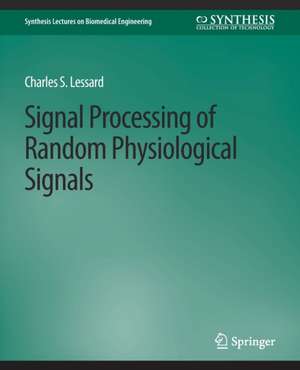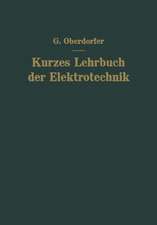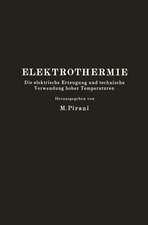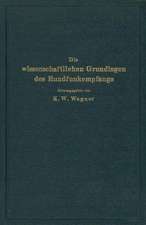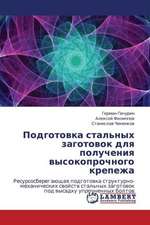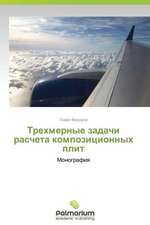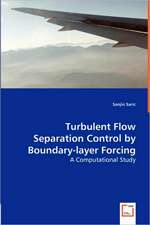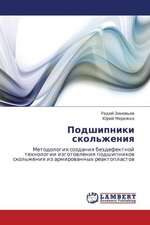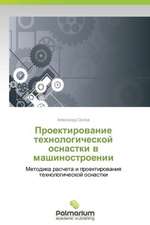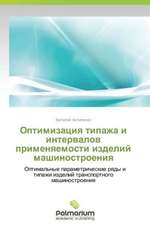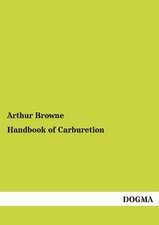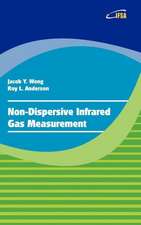Signal Processing of Random Physiological Signals: Synthesis Lectures on Biomedical Engineering
Autor Charles S. Lessarden Limba Engleză Paperback – 31 dec 2007
Din seria Synthesis Lectures on Biomedical Engineering
- 17%
 Preț: 362.02 lei
Preț: 362.02 lei - 15%
 Preț: 522.24 lei
Preț: 522.24 lei - 5%
 Preț: 364.74 lei
Preț: 364.74 lei - 5%
 Preț: 525.87 lei
Preț: 525.87 lei - 15%
 Preț: 636.80 lei
Preț: 636.80 lei -
 Preț: 382.95 lei
Preț: 382.95 lei -
 Preț: 268.83 lei
Preț: 268.83 lei -
 Preț: 260.77 lei
Preț: 260.77 lei -
 Preț: 266.32 lei
Preț: 266.32 lei -
 Preț: 265.18 lei
Preț: 265.18 lei -
 Preț: 262.47 lei
Preț: 262.47 lei -
 Preț: 204.76 lei
Preț: 204.76 lei -
 Preț: 268.66 lei
Preț: 268.66 lei -
 Preț: 262.47 lei
Preț: 262.47 lei -
 Preț: 206.84 lei
Preț: 206.84 lei -
 Preț: 192.05 lei
Preț: 192.05 lei -
 Preț: 261.32 lei
Preț: 261.32 lei -
 Preț: 261.53 lei
Preț: 261.53 lei -
 Preț: 206.84 lei
Preț: 206.84 lei -
 Preț: 349.36 lei
Preț: 349.36 lei -
 Preț: 260.95 lei
Preț: 260.95 lei -
 Preț: 204.76 lei
Preț: 204.76 lei -
 Preț: 391.02 lei
Preț: 391.02 lei -
 Preț: 268.83 lei
Preț: 268.83 lei -
 Preț: 205.92 lei
Preț: 205.92 lei -
 Preț: 382.57 lei
Preț: 382.57 lei -
 Preț: 346.48 lei
Preț: 346.48 lei -
 Preț: 264.41 lei
Preț: 264.41 lei -
 Preț: 384.48 lei
Preț: 384.48 lei -
 Preț: 259.04 lei
Preț: 259.04 lei -
 Preț: 260.95 lei
Preț: 260.95 lei -
 Preț: 261.32 lei
Preț: 261.32 lei -
 Preț: 158.66 lei
Preț: 158.66 lei -
 Preț: 267.86 lei
Preț: 267.86 lei -
 Preț: 207.65 lei
Preț: 207.65 lei -
 Preț: 205.92 lei
Preț: 205.92 lei -
 Preț: 268.66 lei
Preț: 268.66 lei -
 Preț: 322.31 lei
Preț: 322.31 lei -
 Preț: 205.70 lei
Preț: 205.70 lei -
 Preț: 226.22 lei
Preț: 226.22 lei - 15%
 Preț: 404.48 lei
Preț: 404.48 lei -
 Preț: 263.28 lei
Preț: 263.28 lei -
 Preț: 383.71 lei
Preț: 383.71 lei -
 Preț: 273.45 lei
Preț: 273.45 lei -
 Preț: 207.06 lei
Preț: 207.06 lei -
 Preț: 263.06 lei
Preț: 263.06 lei -
 Preț: 260.77 lei
Preț: 260.77 lei -
 Preț: 205.33 lei
Preț: 205.33 lei
Preț: 321.54 lei
Nou
Puncte Express: 482
Preț estimativ în valută:
61.54€ • 64.01$ • 51.57£
61.54€ • 64.01$ • 51.57£
Carte tipărită la comandă
Livrare economică 13-27 martie
Preluare comenzi: 021 569.72.76
Specificații
ISBN-13: 9783031004827
ISBN-10: 3031004825
Ilustrații: X, 222 p.
Dimensiuni: 191 x 235 mm
Greutate: 0.41 kg
Editura: Springer International Publishing
Colecția Springer
Seria Synthesis Lectures on Biomedical Engineering
Locul publicării:Cham, Switzerland
ISBN-10: 3031004825
Ilustrații: X, 222 p.
Dimensiuni: 191 x 235 mm
Greutate: 0.41 kg
Editura: Springer International Publishing
Colecția Springer
Seria Synthesis Lectures on Biomedical Engineering
Locul publicării:Cham, Switzerland
Cuprins
Biomedical Engineering Signal Analysis.- System Classification.- Classification of Signals.- Basis Functions and Signal Representation.- Data Acquisition Process.- Sampling Theory and Analog-to-Digital Conversion.- Stationarity and Ergodic Random Processes.- Nonparametric Statistic and the Runs Test for Stationarity.- Correlation Functions.- Convolution.- Digital Filters.- Fourier Series: Trigonometric.- Fast Fourier Transform.- Truncation of the Infinite Fourier Transform.- Spectral Analysis.- Window Functions and Spectral Leakage.- Transfer Function Via Spectral Analysis.- Coherence Function from Spectral Analysis.- Error in Random Data Estimate Analysis (Information Is Paraphrased from Bendat & Piersol).
Notă biografică
Charles Lessard, Ph.D., Lt. Colonel, U.S. Air Force (Retired), IEEE Life Fellow, Associate Professor, Biomedical Engineering Department, Texas A&M University. Dr. Lessard received his doctorate in Electrical Engineering from Marquette University in 1972, his master’s degree in Electrical Engineering from the Air Force Institute of Technology in 1967 and his bachelor’s also in Electrical Engineering from Texas A&M University in 1958. As a U.S. Air Force Pilot, he flew F-86L All Weather Interceptors and B-52 Strategic Bombers. He was a Lead Engineer and scientist with the School of Aerospace Medicine and the AF Medical Research Laboratories before serving as the overseas Program Manager and Spain’s Field Office director in the installation and testing of Spain’s Air Defense system. He joined the Texas A&M Engineering faculty in 1981 as an Assistant Professor after retiring from the Air Force in July 1981. Dr. Lessard has served as an Adjunct Professor with the Air Force Institute of Technology, Electrical Engineering, Assistant Professor, Night Division, San Antonio College, Assistant Professor, Night Division, St. Philips College and Adjunct Professor, Physical Therapy, Texas Women’s University. Dr. Lessard specializes in physiological signal processing, design of virtual medical instrumentation, control systems, noninvasive physiological measurements, vital signs, nystagmus, sleep and performance decrement, spatial disorientation, acceleration (G)-induced loss of consciousness (G-LOC), and neural network analysis.
